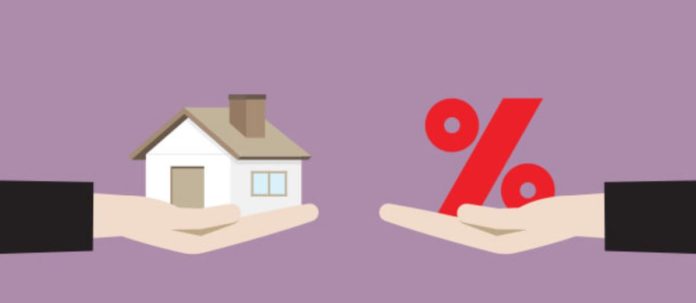I am a huge advocate of the buy and hold model because it pays you in 5 ways:
1. Cash Flow
2. Appreciation
3. Tax sheltered income
4. Mortgage principal paydown
5. Inflation profiting
In the 2 year period between May 1st, 2019 to May 1st, 2021 the Case Shiller US Home Price Index is up 21.7%
This level of appreciation is great news for real estate investors’ balance sheets.
Yet for the buy and hold investor focused on building cash flow to increase personal freedom, there are actually some drawbacks to appreciation and equity growth.
Property Taxes:
Property taxes are determined as a percentage of values. As values go up, the local county assessor’s office has the right to increase the amount of tax due. While you do have the right to challenge the assessor’s valuation and therefore the amount of tax you owe, in general, in a market where values are increasing, it’s tough to make the case to get your assessment lowered. I just received the updated annual tax bill for one of my rentals in Henry County, GA (Atlanta) and it was 17% higher than last year.
All else being equal, when taxes increase, cash flow decreases.
Insurance:
Insurance companies base monthly premiums on a variety of factors and home value increases don’t necessarily correlate in a linear fashion with insurance rate hikes.
However, depending upon the type of policy, replacement cost is often a big driver. When the cost to build, and in the case of a total loss claim rebuild, goes up, rates go up.
Given the tightness of the current land, labor and material supply markets, the cost to build new homes has increased significantly. In turn, insurance companies have been compelled to raise rates.
All else being equal, when insurance premiums increase, cash flow decreases
Return On Equity:
The key metric that many buy and hold investors measure and consider paramount, including this author, is cash on cash return. If you put a 20% down payment on a $170,000 home ($34,000) and you cash flow $300 per month or $3,600 per year, your cash on cash return is $3,600/$34,000 = 10.6%
Cash on cash return is the simplest way to quickly measure ROI (Return on Investment). Measuring ROI confirms if you are making a good investment and is a great tool to compare various investment options.
Savvy investors also pay attention to Return on Equity (ROE). That is, how much are you earning on a yearly basis relative to the equity you have in the asset. Day 1, assuming you paid market value for a rental home, your ROI and ROE are the same. But they quickly diverge. When the tenant pays your mortgage every month, your equity increases. When the home appreciates, your equity increases.
If your rental home increases in value from $170K to $200K and your tenant pays down the amount you owe on your mortgage by $6,000 over the same timeframe, you now owe $130,000 on the $200,000 asset meaning you have $70,000 in equity.
With your $300 per month in cash flow your return on equity goes down from 10.6% to 5.1%
So What Can We Do About This?
There are 2 main things that buy and hold investors should focus on to offset increased costs and decreasing ROE.
1. Systemically Increase Rents
When landlords have a quality tenant that wants to renew their lease, they may be reluctant to raise the rent for fear of losing the tenant and facing turnover and vacancy costs. This is a valid concern, however, not keeping up with market rents will result in steadily eroding cash flow.
Quality property managers understand this and are adept at having the conversation with tenants on your behalf. “Mr. Tenant, the owner needs to raise rents because taxes and insurance costs are increasing. Additionally Mr. Tenant, maintenance costs are on the rise and if something were to break in your home, we need to make sure there are funds available to promptly fix it for you.”
Furthermore, quality property managers are highly in-tune with what market rental rates are and will therefore know what the tenants’ other options are in the area if they decide to leave. They know how much leverage a tenant has behind their objection to the rent increase.
2. Pull Out Equity & Reinvest It
Savvy wealth builders know the power of intelligently borrowing money. When you have an asset that appreciates, you are in the awesome position of being able to not only be the borrower but also, in essence, act as the bank. You can borrow from yourself.
In our article How Houses Can Buy You Houses, we outlined ways to tap into home equity via home equity loans, cash out refinances and HELOCS.
HELOCS are my favorite because you don’t have to pay back any interest until the money is deployed in a new investment.
In our example from above where you have $70K in equity in an asset, you can most likely extract at least $50K to acquire a new asset. Say you use it as a down payment on another $200k home. that cash flows. Not only did you get another asset from which you will experience the 5 powerful benefits of the buy and hold model, but your Return on Equity on the 1st home increases.
Summary
In our article My Favorite Economic Chart, we highlighted that long term buy and hold investors should not be too concerned if home values dip for the short term. Similarly counterintuitive, investors should be aware of the downsides of home appreciation and equity growth.
If buy and hold investors do not systematically increase rents, monthly cash flow will be eroded. Return on Equity diminishes with appreciation. Shrewd property owners take advantage of equity extraction tools to counteract ROE decline.
Welcome!Log into your account













